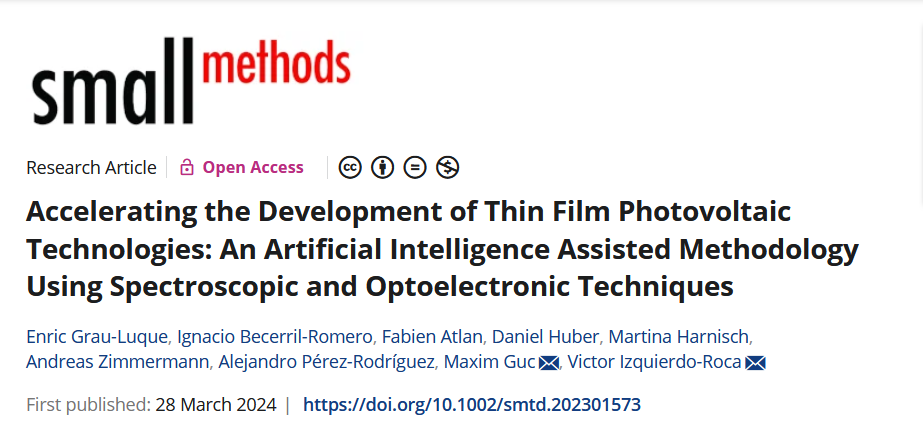Platform-Zero is thrilled to have contributed part of its researches in the 8th Volume of Small Methods.
This work introduces a methodology for using combinatorial analysis (CA) and artificial intelligence (AI) to accelerate the development of thin film photovoltaic (TFPV) technologies, covering steps from sample synthesis to AI-assisted data analysis and research acceleration. Illustrated with examples, the methodology demonstrates its effectiveness in rapidly extracting significant insights from complex TFPV samples, and it can be applied to other materials and devices using various characterization techniques.
Thin film photovoltaic (TFPV) materials and devices present a high complexity with multiscale, multilayer, and multielement structures and with complex fabrication procedures. To deal with this complexity, the evaluation of their physicochemical properties is critical for generating a model that proposes strategies for their development and optimization. However, this process is time-consuming and requires high expertise. In this context, the adoption of combinatorial analysis (CA) and artificial intelligence (AI) strategies represents a powerful asset for accelerating the development of these complex materials and devices. This work introduces a methodology to facilitate the adoption of AI and CA for the development of TFPV technologies. The methodology covers all the necessary steps from the synthesis of samples for CA to data acquisition, AI-assisted data analysis, and the extraction of relevant information for research acceleration. Each step provides details on the necessary concepts, requirements, and procedures and are illustrated with examples from the literature. Then, the application of the methodology to a complex set of samples from a TFPV production line highlights its ability to rapidly glean significant insights even in intricate scenarios. The proposed methodology can be applied to other types of materials and devices beyond PV and using different characterization techniques.
Read the full paper at https://doi.org/10.1002/smtd.202301573.
